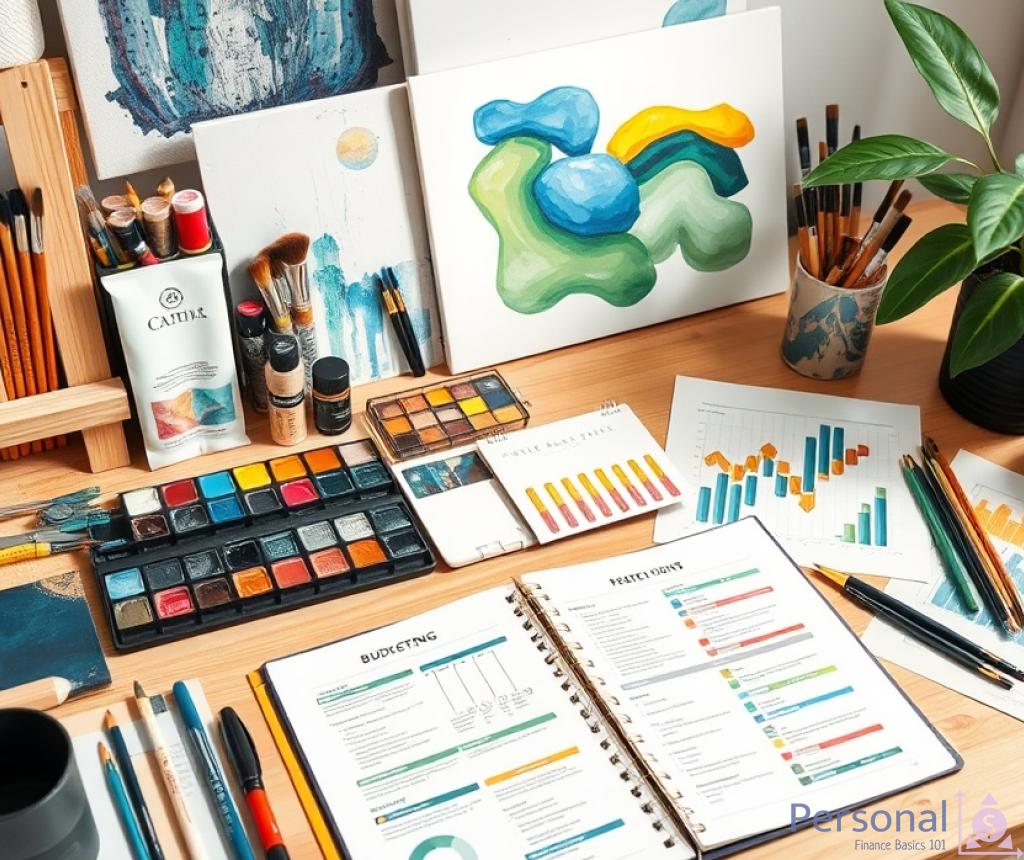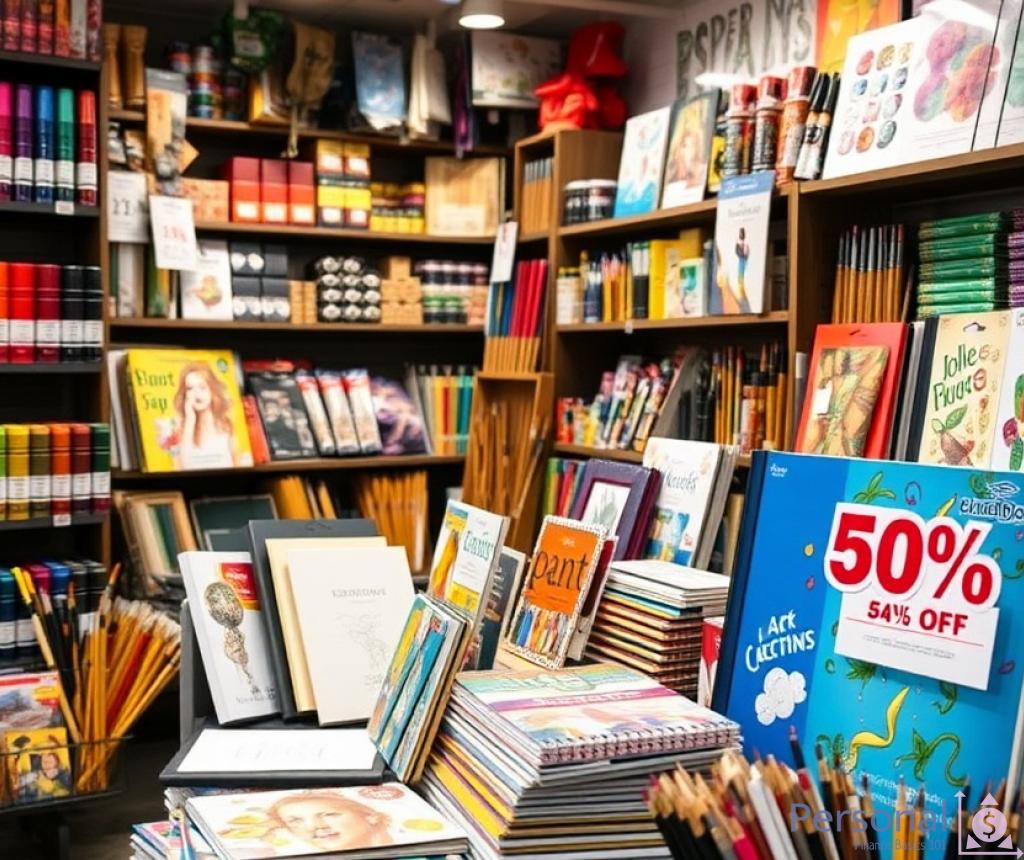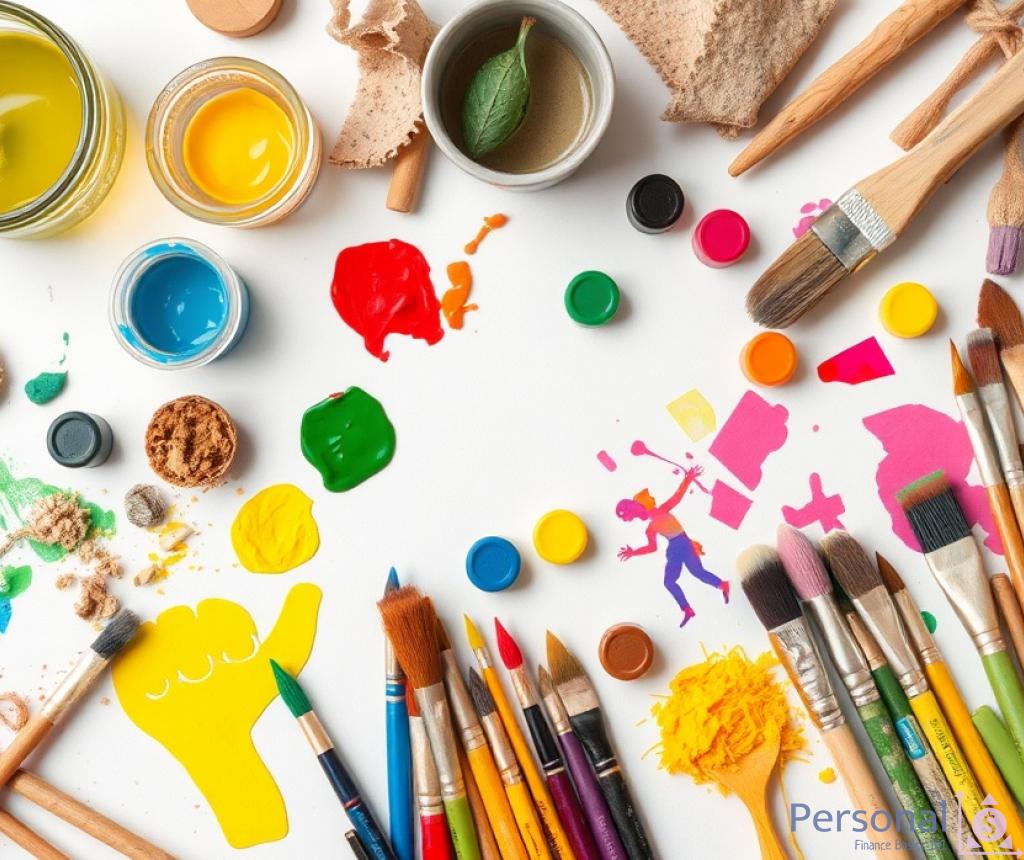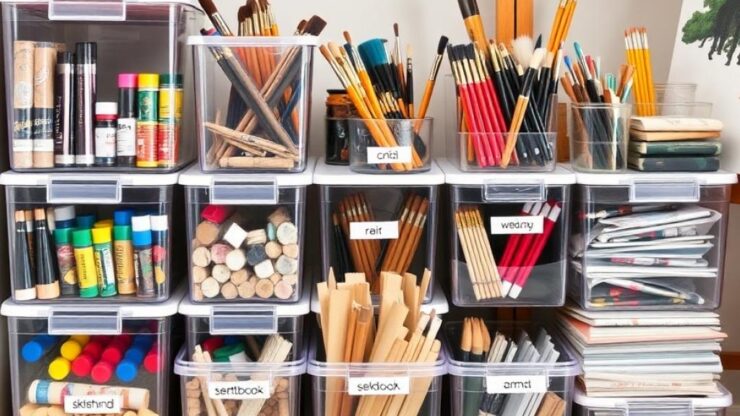Budgeting for Art Supplies

Understanding Your Art Supply Needs
When it comes to budgeting for art supplies, the first step is to assess your actual needs. Artists often find themselves overwhelmed by the vast array of materials available, leading to impulsive purchases that can quickly deplete a budget. Taking a moment to evaluate which supplies are essential for your specific projects will not only streamline your purchasing process but also save you money in the long run.
Consider the mediums you use most frequently—whether you are a painter, sculptor, or digital artist—and create a list of must-have items. This list will serve as your foundation for a realistic budget, allowing you to prioritize spending on high-quality supplies that will enhance your work.
Creating a Strategic Budget Plan
Once you have identified your essential supplies, it’s time to develop a budgeting strategy. Begin by setting a monthly or quarterly budget based on your income and other financial obligations. Allocating a specific amount for art supplies can help prevent overspending and encourage you to seek out the best deals available.
To aid in this process, consider the following breakdown of common art supplies and their estimated costs:
| Supply Type | Estimated Cost |
|---|---|
| Paints (Acrylic/Oil) | $20 – $100 |
| Brushes | $10 – $50 |
| Canvas/Paper | $15 – $70 |
| Tools (Knives, Palettes) | $5 – $30 |
| Digital Supplies (Software, Tablets) | $100 – $1000 |
Smart Shopping: Tips to Cut Costs
Finally, implementing smart shopping techniques can significantly reduce your art supply expenses. Knowing when and where to shop can make a substantial difference in your overall costs. Here are some tips that can help you save:
- Buy in Bulk: Purchasing larger quantities of frequently used materials can lead to discounts.
- Use Coupons and Discounts: Always look for sales, promo codes, and student discounts at art supply stores.
- Join Loyalty Programs: Many stores offer loyalty programs that provide members with exclusive deals and rewards.
- Explore Second-Hand Options: Thrift shops, online marketplaces, and local art groups often have gently used supplies at a fraction of the original cost.
Finding Discounts and Promotions

In the ever-evolving world of art, where creativity meets practicality, finding ways to save money on supplies can provide artists with more freedom to express themselves. One of the most effective strategies is leveraging discounts and promotions offered by various retailers. By staying informed and being strategic about purchases, artists can significantly reduce their expenses while still acquiring quality materials. This section delves into various methods that can help you uncover valuable deals on art supplies.
Exploring Seasonal Sales and Events
Many art supply retailers hold seasonal sales that coincide with major holidays, back-to-school events, or even end-of-year clearance events. These occasions present a golden opportunity for artists to stock up on essential supplies at reduced prices. Furthermore, following local art festivals or exhibitions can lead to discovering unique promotions, as vendors often offer discounts to attract new customers. Timing your purchases around these events can lead to substantial savings, allowing you to acquire premium materials without straining your budget.
The Power of Online Resources
In today’s digital age, the internet serves as a treasure trove for finding discounts. Many art supply stores have online platforms that frequently update their promotions, making it essential to subscribe to newsletters from your favorite retailers. Additionally, websites dedicated to compiling coupon codes can be extremely beneficial. These resources often provide exclusive discounts that are not available in-store. Moreover, social media platforms can serve as a real-time alert system, where artists can follow their favorite brands to receive instant notifications on flash sales or limited-time offers. Utilizing these online tools not only saves money but also keeps you informed about the latest trends and products in the art world.
Networking with Fellow Artists
Another underutilized strategy for finding discounts is leveraging your network within the artistic community. Connecting with fellow artists can yield insights into where to find the best deals on supplies. By participating in local art clubs or online forums, you can share information about sales, swap supplies, or even join group purchases to take advantage of bulk discounts. Many artists also sell unused or surplus materials at a fraction of the retail price, creating a win-win situation for both parties. This kind of collaboration not only helps save money but fosters a supportive community where artists can thrive together.
DIY Art Supplies Alternatives

In the quest for cost-effective art supplies, many artists are discovering the benefits of creating their own materials. Not only does this approach significantly reduce expenses, but it also fosters creativity and innovation. By transforming everyday items into functional art supplies, artists can explore new techniques and styles while staying within budget. Let’s delve into some practical DIY alternatives that can help stretch your artistic dollar.
Crafting Your Own Materials
Making your own art supplies can be a rewarding experience that enhances your artistic process. With a bit of creativity and resourcefulness, you can transform common household items into tools and mediums that rival commercial products. Below are some popular DIY alternatives that artists can easily create.
- Acrylic Paints: Combine equal parts of cornstarch, white glue, and water with food coloring to make vibrant paints.
- Canvas: Use old bed sheets or curtains stretched over a frame for a budget-friendly canvas alternative.
- Brushes: Create brushes from natural materials like twigs or sponge pieces, allowing for unique textures in your work.
- Watercolor Paints: Mix baking soda, white vinegar, corn syrup, and food coloring to craft watercolors that are both fun and affordable.
- Texture Mediums: Combine flour and water to create a paste that can be used for adding texture to your artwork.
Repurposing Common Items for Artistic Use
In addition to crafting your own supplies, repurposing items you already have can lead to innovative artistic solutions. This not only saves money but also promotes environmental sustainability by minimizing waste. Here are some everyday items that can be cleverly repurposed:
- Old Magazines: Use them for collage projects or as sources of inspiration for color palettes and compositions.
- Plastic Containers: Transform them into paint palettes or storage solutions for small supplies.
- Cardboard: Cut and shape cardboard to create models or as a backing for artworks, reducing the need for expensive materials.
- Egg Cartons: Perfect for mixing paints or storing small items like beads and sequins.
By embracing the DIY spirit, artists can cultivate a unique style while maintaining financial control. This approach not only enhances resourcefulness but also encourages a deeper connection with the materials used in creating art.
Organizing and Inventorying Supplies
Effective organization and inventory management of your art supplies can significantly enhance your creative process while also saving you both time and money. By establishing a systematic approach to your materials, you can avoid unnecessary purchases and ensure that you make the most of what you already own. This section delves into practical strategies for organizing your art supplies, which not only fosters a more efficient workspace but also encourages a more mindful approach to art-making.
Creating a Comprehensive Inventory
Developing a detailed inventory of your art supplies is an essential step toward better management. This practice allows you to keep track of what you have on hand and helps you identify items that are running low. By cataloging your supplies, you can streamline your shopping process and avoid duplicating purchases. Here are some key steps to consider when creating your inventory:
- List Your Supplies: Start by making a list of all your art materials, including paints, brushes, canvases, tools, and any miscellaneous items. Be as specific as possible, noting the brand and quantity of each item.
- Categorize Items: Organize your list into categories for easy reference. For example, group paints together, brushes in another section, and so forth. This will help you quickly find what you need when inspiration strikes.
- Track Usage: Keep a record of how often you use each item. This data can provide insights into which supplies are essential for your artistic practice and which ones may not warrant a future purchase.
Establishing a Functional Storage System
Once you have your inventory in place, the next step is to create a functional storage system that works for your workflow. A well-organized workspace can inspire creativity and help you locate supplies without frustration. Consider implementing these strategies:
- Designate Specific Areas: Allocate distinct areas for different types of supplies. For instance, have a drawer or shelf dedicated to paints, another for brushes, and a separate section for canvases.
- Use Clear Containers: Invest in transparent bins or boxes that allow you to see your supplies at a glance. Label each container to easily identify its contents.
- Implement a Rotation System: If you have a large collection of materials, consider rotating supplies in and out of your main workspace. This can help you rediscover forgotten materials and keep your creative process fresh.
By taking the time to organize and inventory your art supplies, you not only maximize your resources but also enhance your overall artistic experience. A tidy and well-managed workspace can lead to increased productivity and a more enjoyable creative journey.
Building a Long-Term Art Supply Fund
As artists navigate the financial challenges of their craft, establishing a long-term art supply fund becomes a game-changer. By strategically allocating funds specifically for art supplies, artists can ensure that they not only have access to the materials they need but also the opportunity to invest in higher-quality products that enhance their work. This proactive approach not only alleviates the stress of last-minute purchases but also fosters a more thoughtful and intentional art-making process.
Setting Clear Financial Goals is the first step toward building a robust art supply fund. Artists must assess their individual needs and create a budget that reflects their unique practices. This involves calculating the average monthly expenditure on supplies and setting a target savings goal that accounts for both regular purchases and occasional splurges on premium materials. By breaking down these goals into manageable monthly contributions, artists can cultivate a habit of saving that aligns with their creative endeavors. For instance, setting aside a small percentage of income from art sales or freelance projects can build a substantial fund over time.
Another effective strategy is identifying and prioritizing essential purchases. Artists should categorize their supplies into ‘must-haves’ and ‘nice-to-haves,’ focusing on the essentials that directly impact their current projects. This practice not only streamlines spending but also empowers artists to make informed decisions about when to invest in higher-quality items versus when to opt for budget-friendly alternatives. Furthermore, by regularly reviewing and adjusting their inventory, artists can avoid unnecessary purchases and keep their spending aligned with their creative goals.
To maximize the potential of the fund, artists should also explore alternative income streams that can supplement their art supply budget. Engaging in workshops, teaching art classes, or selling prints and original works can generate additional revenue. This income can be earmarked solely for art supplies, providing artists with a dedicated resource that enhances their creative toolkit. Additionally, leveraging community resources, such as local art grants or crowdfunding platforms, can further bolster the fund and provide opportunities for artists to access materials they might not otherwise afford.
Disclaimer
This article has been created or edited with the support of artificial intelligence and is for informational purposes only. The information provided should not be considered investment advice. Please seek the support of a professional advisor before making any investment decisions.






